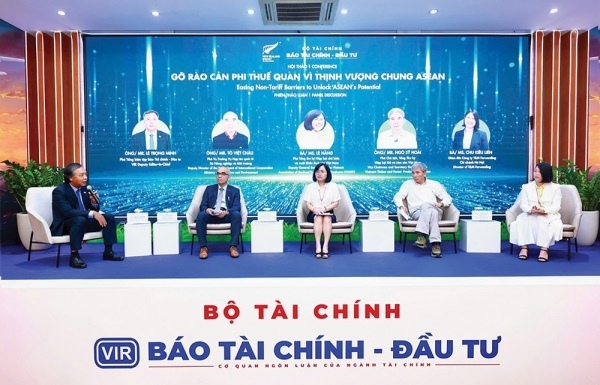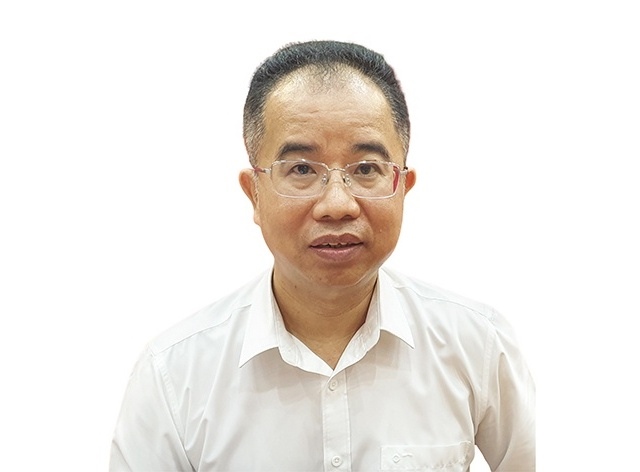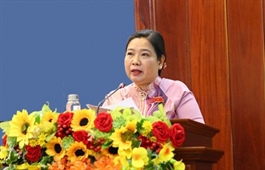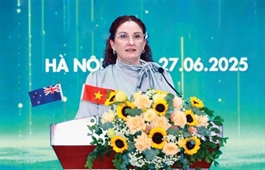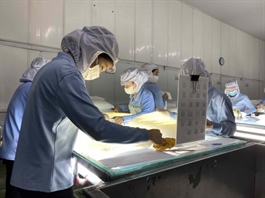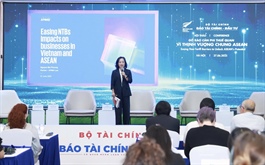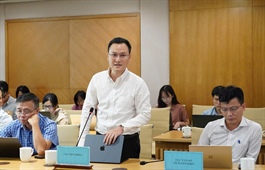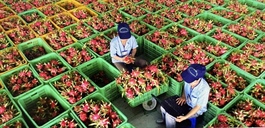ASEAN considers strategies to soften non-tariff hurdles
ASEAN considers strategies to soften non-tariff hurdles
Streamlining non-tariff barriers to reduce the regulatory burden on businesses remains a key priority for ASEAN’s intra-trade, with Vietnam expanding exports to the region.
It is expected that at the 47th ASEAN Summit, slated for November in Malaysia, an upgrade of the ASEAN Trade in Goods Agreement will be inked, facilitating the bloc’s intra-trade flows through transparency mechanisms, procedures, and practices, as well as minimising the negative impacts of the barrier elements in non-tariff measures (NTMs).
Intra-ASEAN trade makes up just 21.2 per cent of the region’s total trade last year, falling far behind other blocs like the EU, which sees an intra-trade level of 60 per cent.
Amid the high tariffs imposed on all regional member states by the United States, ASEAN as a whole is now emphasising the role of trade as a growth driver and the risks from uncertain trade policies. They also underscored the need to remove non-tariff barriers (NTBs) to boost the bloc’s intra-trade flows.
Currently, no specific figures on NTBs are being applied in each ASEAN nation, but it is estimated that the total figure for the whole region may be thousands. Barriers like export restrictions continue to be a challenge for advancing intra-ASEAN trade, which has remained largely stagnant for many years.
At last week’s seminar held by VIR in Hanoi on easing NTBs to unlock ASEAN potential, the World Bank was cited as having reported that currently, there are nine main types of NTBs in ASEAN, including sanitary and phytosanitary measures (37.5 per cent); technical barriers to trade (37.5 per cent); and examination of goods before transport and other procedures (1.3 per cent).
According to the United Nations Conference on Trade and Development, trade costs from NTBs account for 2–4 per cent of goods value. A study by the Global Trade Analysis Project at Purdue University in the US estimated that by reducing costs due to NTBs by just 10 per cent, ASEAN could gain trade growth of 3–4 per cent, equivalent to tens of billions of US dollars.
|
Collective initiatives
In upcoming ASEAN meetings, having made good progress on tariff liberalisation, focus and emphasis is now being given to addressing NTMs that may have trade effects. ASEAN’s focus on addressing related issues is premised on the policy objective that trade costs borne by traders doing business in the region go beyond customs or import duty, as embodied in tariff rates.
The concept of NTMs is broad and includes a number of different measures, ranging from quantitative restrictions of all kinds to technical regulations, as well as standards and customs rules, among others. NTMs are distinct from NTBs: the latter are subsets of NTMs and are considered as measures that have potentially trade-inhibiting effects.
Aligned with ASEAN’s commitment to eliminate barriers, ASEAN member states have collectively embarked on several initiatives related to such measures. To ensure greater transparency, they are required to notify newly adopted NTMs as well as amendments to existing ones.
A database is to be established, consisting of lists of measures submitted by each member state. The lists are posted on the ASEAN website, but an official database is a work in progress, with plans to update the lists as well as to reclassify measures to align the database with international standards.
In terms of institutional support, interagency bodies have been established at the national level in each member state to strengthen coordination of domestic efforts on NTMs. Similarly, discussions are underway on actual cases filed.
At the recent ASEAN Business Forum in Malaysia, Nazmi Idrus, head of research at CGS International Securities Malaysia said, “We have export restrictions and export borders. In Malaysia, we have the Bumiputera policy. So, are you willing to remove certain policies to actually promote inter-regional trade? I don’t think that’s something members [are] currently looking into.”
Many ASEAN countries have built their economies to focus more on big markets like China, the US, and Europe rather than trading with each other, he added.
There have been different requirements on data localisation in each country. For example, under Indonesia’s Personal Data Protection Law enacted in 2022, for public sector entities and the financial sector, it has implemented specific localisation measures.
Moreover, in ASEAN, there have also been overlapping requirements for testing and certification, such as local clinical testing requirements, despite drugs already being approved and tested in a foreign country under internationally recognised pharma industry standards.
Addressing practices
In the ASEAN context, a key non-tariff barrier hampering deeper regional trade integration are the divergent national standards, particularly in areas such as testing and certification, said Arief Ramayandi, a senior research fellow at the Asian Development Bank Institute.
“These barriers are compounded by practices such as import licensing, quotas, complex customs procedures and local content regulations,” he told The Business Times.
The answer, according to Ramayandi, consists in greater harmonisation across standards and certification processes, and the establishment of an independent mechanism to monitor and address NTB-related practices in a more effective manner.
For Vietnam, its National Statistics Office reported that Vietnam’s bilateral trade with regional nations reached $83.9 billion in 2024, with the country suffering from a $9.9 billion trade deficit. Vietnam’s export turnover from ASEAN member states stood at $37 billion, up 13.7 per cent on-year, and the country’s import turnover hit $46.9 billion, up 14.7 per cent on-year,
In the first five months of 2025, the bilateral trade was $38.1 billion, with Vietnam’s exports of $15.8 billion, and imports worth $22.3 billion. This means a trade deficit of $6.5 billion. The ASEAN is Vietnam’s third-largest trade partner.
On June 18, Prime Minister Pham Minh Chinh issued a directive on boosting trade both at home and abroad. Many key markets are targeted, including ASEAN.
The Ministry of Foreign Affairs was tasked with following the regional and international economic situation, and new trade and investment trends. It also has to analyse trade policy adjustments of partners and take advantage of all opportunities to expand and diversify markets and export item portfolios.
The Ministry of Agriculture and Environment is tasked to instruct enterprises, cooperatives, and farmer households to apply sustainable agricultural standards such as VietGAP and GlobalGAP, with clear origin tracing publicised, meeting global standards in order to avoid NTBs from export markets.
|
Ngo Sy Hoai, vice president and secretary general, Vietnam Timber and Forest Product Association It is important to recognise the significant impact that tariff policies imposed by other countries have had on our sector. This context calls for a renewed focus on the intra-ASEAN market. Alongside growing trade trends, there is a parallel rise in protectionism and neo-mercantilism, which disproportionately affects business. Within ASEAN, if member states work together to harmonise policies and strengthen mutual support, there is ample opportunities to enhance intra-bloc import-export activities. By establishing and promoting common standards, we can collectively convey a message of progress and compliance, rather than passively accepting external regulatory frameworks such as the EU’s Carbon Border Adjustment Mechanism. Compared to several neighbouring countries, Vietnam renders a more proactive adaptation. In the logistics sector, timber is a bulky commodity with high transport costs. A single container of wood products may only yield tens of thousands of US dollars, and there have been times when the value of goods was actually lower than the shipping costs. If we can better optimise transport costs and logistics processes, Vietnam will gain a competitive edge in intra-ASEAN trade, especially in key product categories such as wooden furniture and agro-goods. The production of wooden furniture involves a range of supplementary materials. In Europe, there are stringent standards for oils and adhesives, whereas such requirements have yet to be adopted in ASEAN. ASEAN countries must also step up efforts to improve environmental compliance. Domestically, Vietnam’s policy framework is not a major barrier; however, when it comes to international engagement, there is a need for more critical dialogue. This will allow regulatory authorities on both sides to reach mutual understanding and ensure smoother exporting for Vietnamese companies. |
| Non-tariff barriers hindering free flow of goods and services ASEAN firms rally to unlock regional trade potential 'Shared vision' driving Vietnam–New Zealand economic partnership One ASEAN, one voice: breaking barriers, boosting trade Removing hidden barriers to unlock ASEAN trade |
- 11:21 30/06/2025


